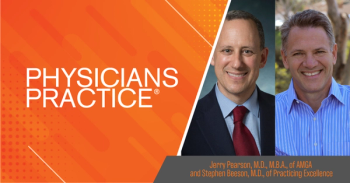
The Most Effective Ways to Communicate With Patients
Today, there are several ways to communicate with patients, but medical practices must choose wisely so the messages are properly received.
Back in the mid 90s when I was in college, I used to spend my summers volunteering with one of the family physicians in my hometown. Not only was I gaining the important experience needed to solidify my decision to apply to medical school, but I was also able to observe a very busy medical practice as a bystander.
In those days, no one had Internet access. Cellular phones existed, but the size was very large and they required a backpack for portability and the phones certainly were not able to receive text messages. The main method of communication from the physician to the patient was one of three methods: word of mouth, telephone, or postal mail. The phones constantly rang. There was a never ending pile of "sticky notes" attached to paper charts that the doctor would have to go through and digest one by one. Sometimes the time to contact a patient regarding test results could be measured in days.
In 2012, we are very fortunate to have other methods of communication. We are still able to contact patients by telephone, postal mail, and of course the most reliable method: word of mouth by direct contact. However, the advances of technology have given to us wireless smartphones in everyone's pockets, a computer or multiple computers in the homes, and the all powerful Internet that can utilize social media such as Twitter and Facebook.
When patients come to the office for routine care, not only do we verify their name, address, phone number, and insurance information, but we also collect e-mail addresses, fax numbers, cell numbers, and any other method of communication they prefer. Our practice utilizes an online patient portal and this is our preferred method of contacting and communicating with our patients. Not only is the portal secure, but every line of communication between the office and patient is saved in each patient's chart for later reference if needed. Patients are encouraged to
In our practice location in southwestern Virginia, we are subject to receive large amounts of snowfall on occasion. If we should ever need to delay opening the office or if we should need to close early, what is the best way to pass along such important information to our patients quickly? I am able to e-mail my webmaster and have the practice webpage edited within minutes. However, not everyone will think to go online and check the website first. Twitter can be a very useful method of sending an important informational post to hundreds of patients within a matter of seconds. For practices that utilize Facebook, the practice status can also be quickly updated and such updates can be posted in the newsfeed.
When the need to convey important protected health information occurs, such as the delivery of laboratory results or follow- up on radiology test results exists, our practice utilizes our online patient portal. The portal is secure and only the patient, or their designated contact person, may view the information contained on the portal. How many times in the past have practices played phone tag to relay important test results? Results can be dropped in the postal mail, however the time required for it to be successfully delivered and even opened by the patient can be several days.
We are very blessed to have been able to openly embrace technology with open arms. While there are several methods of communicating with patients available, the medical practice must carefully choose the best means of communication to ensure our patients receive the information we intend for them to receive. When such technology is used efficiently and securely, medical practices can find that they will be able to reach a larger number of patients with a smaller number of staff members. Not only does this increase the work flow process in the office, but it also provides for a very high rate of patient satisfaction.
Newsletter
Optimize your practice with the Physicians Practice newsletter, offering management pearls, leadership tips, and business strategies tailored for practice administrators and physicians of any specialty.








